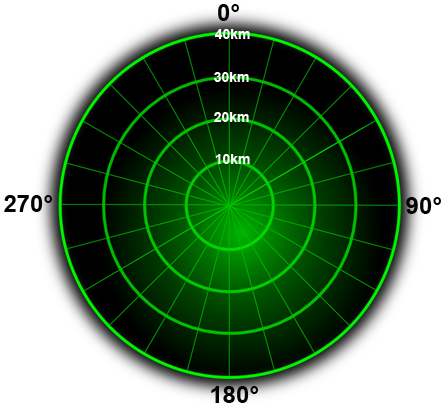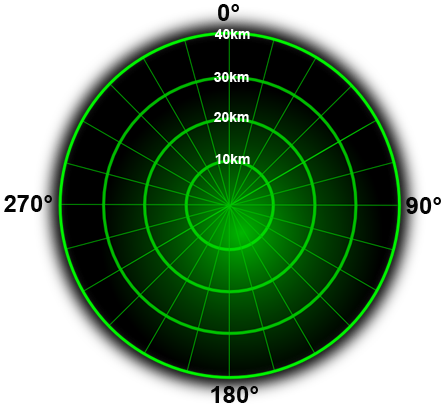Bearing and distance
This task is about reading direction and distance using a radar screen.
|
When a radar detects an object it appears on the screen as a green dot.
The radar screen shows the angle (bearing) and distance (in km) to the object.
Use the radar screen to answer the following questions.
|
 |


